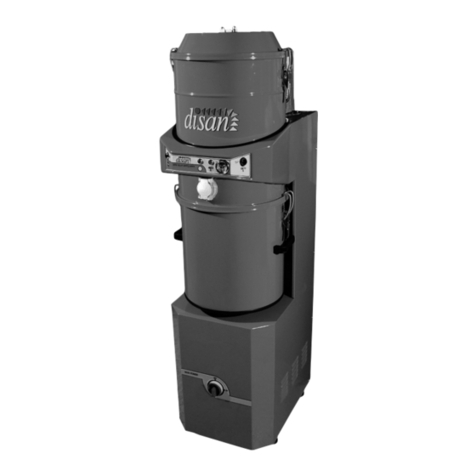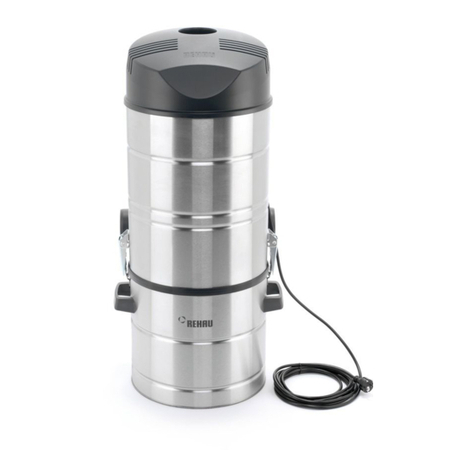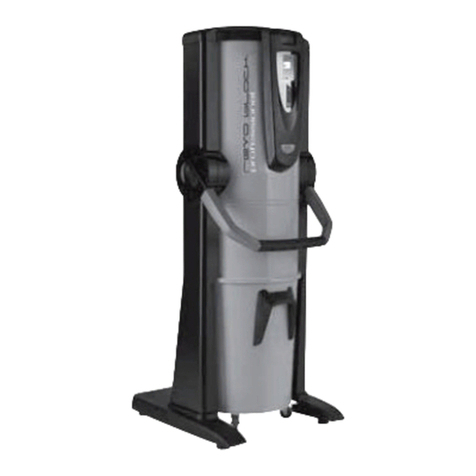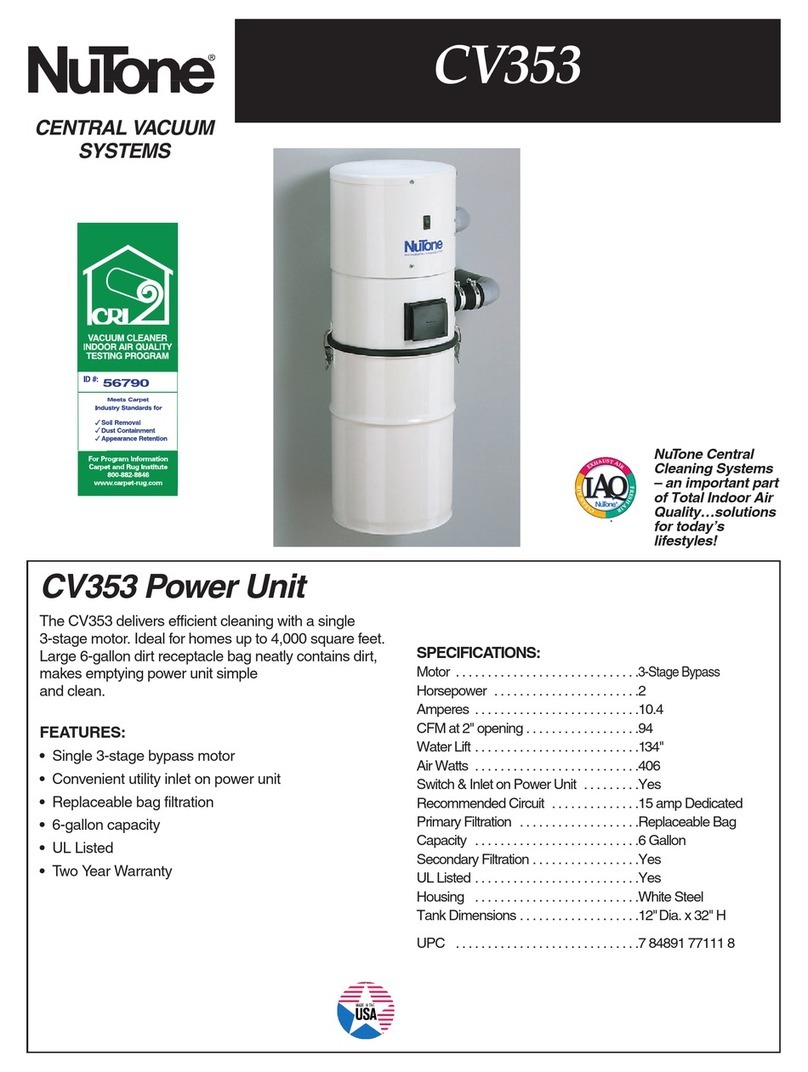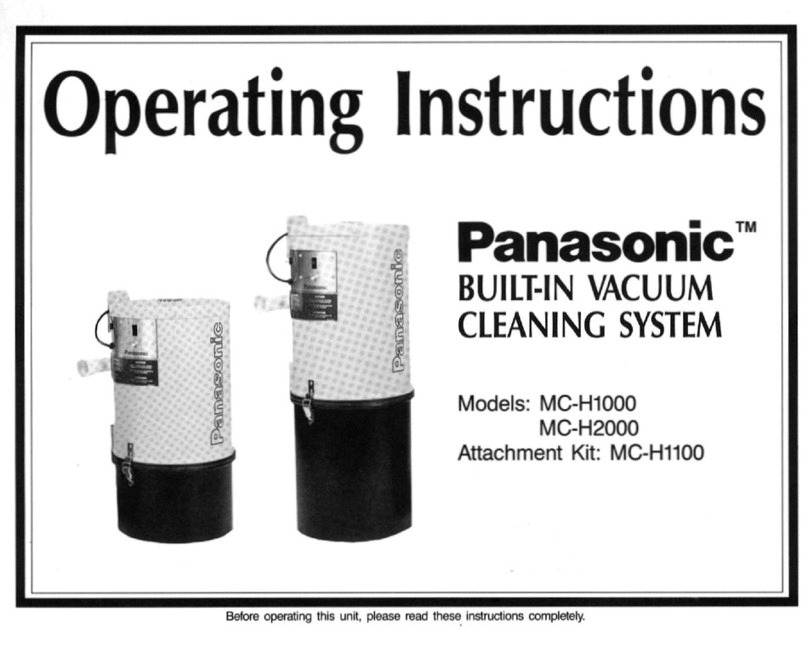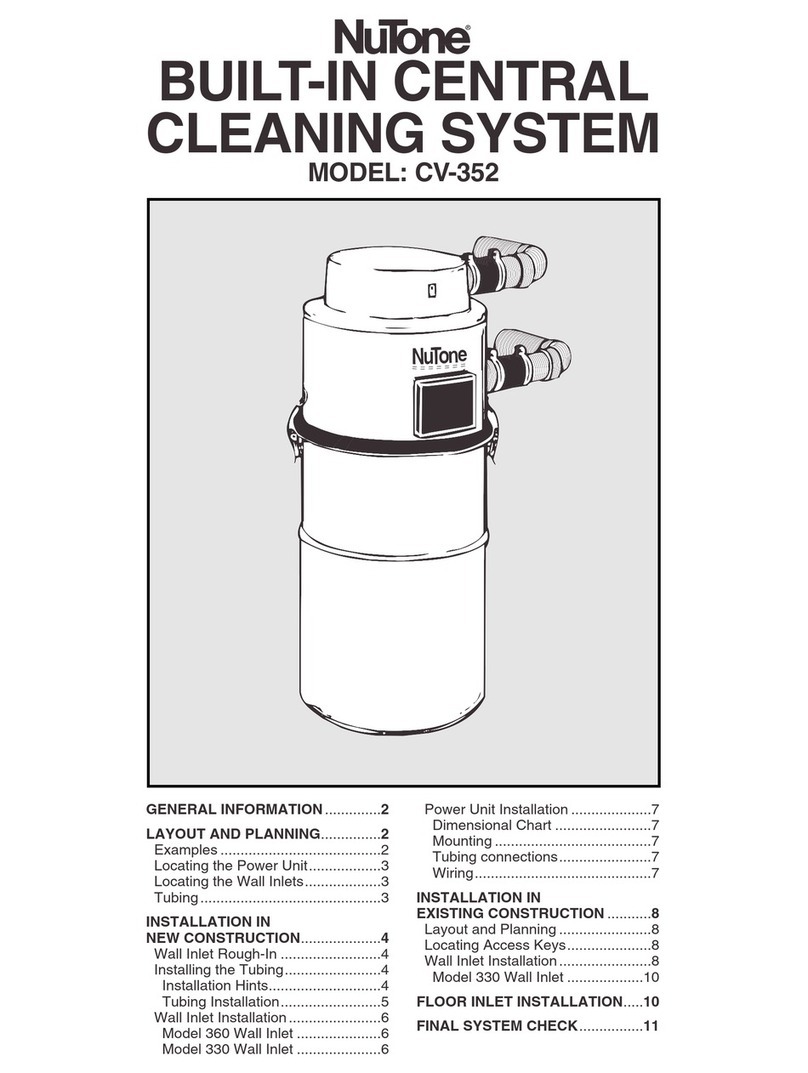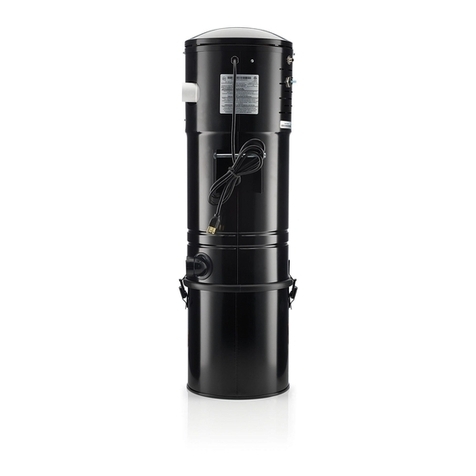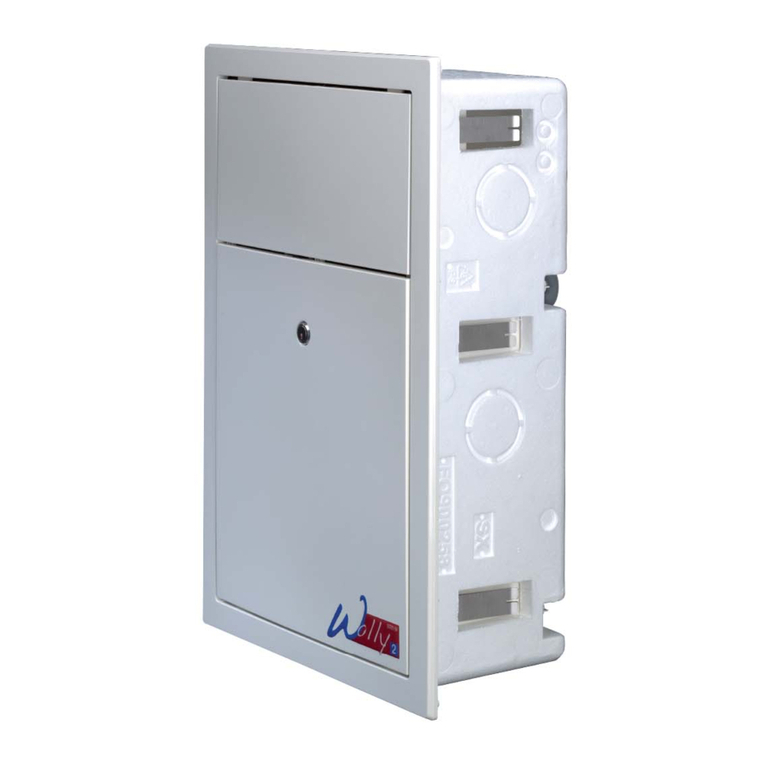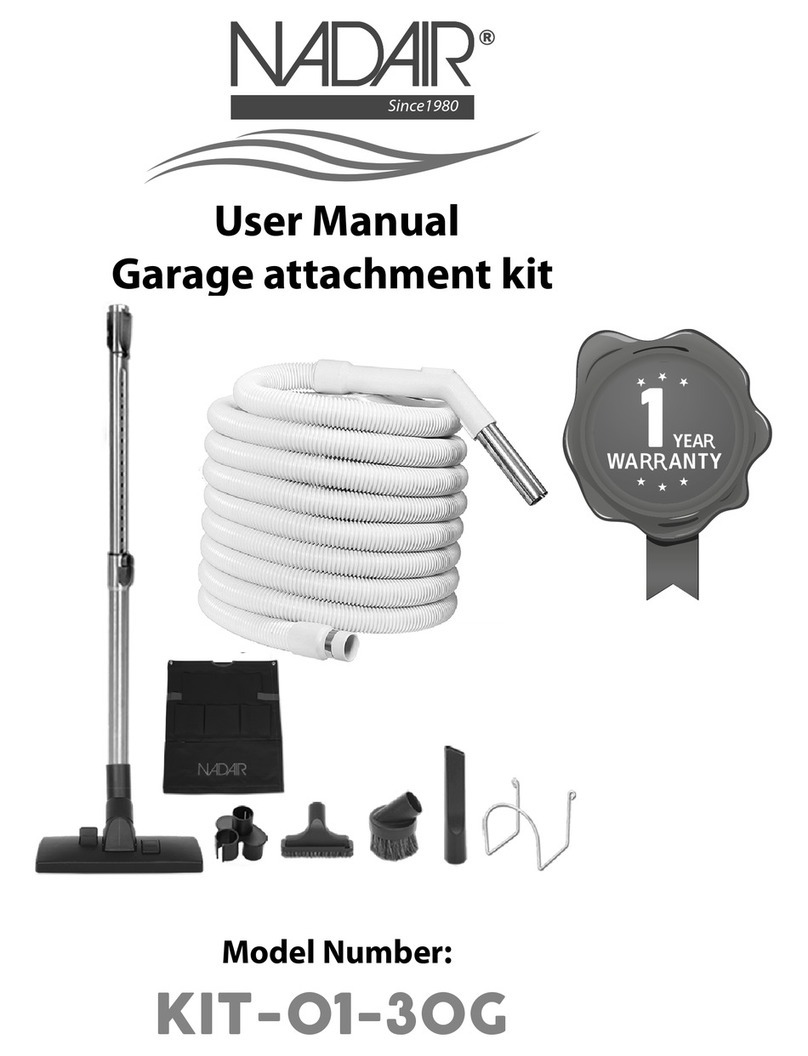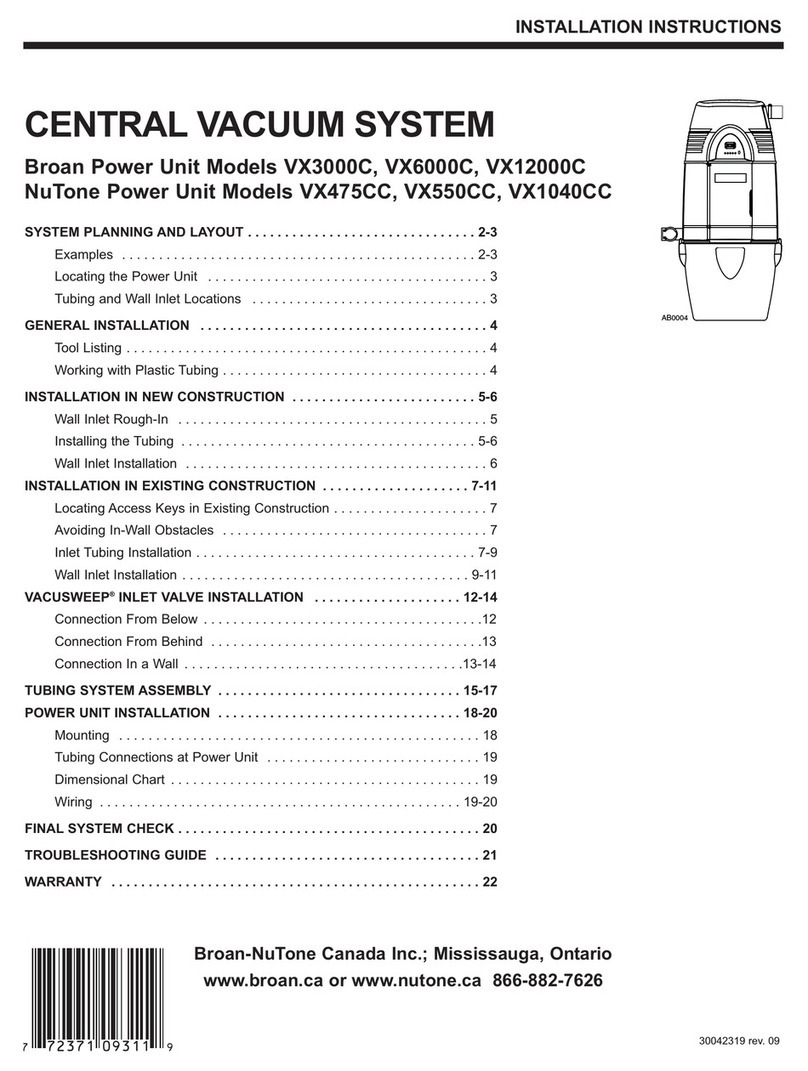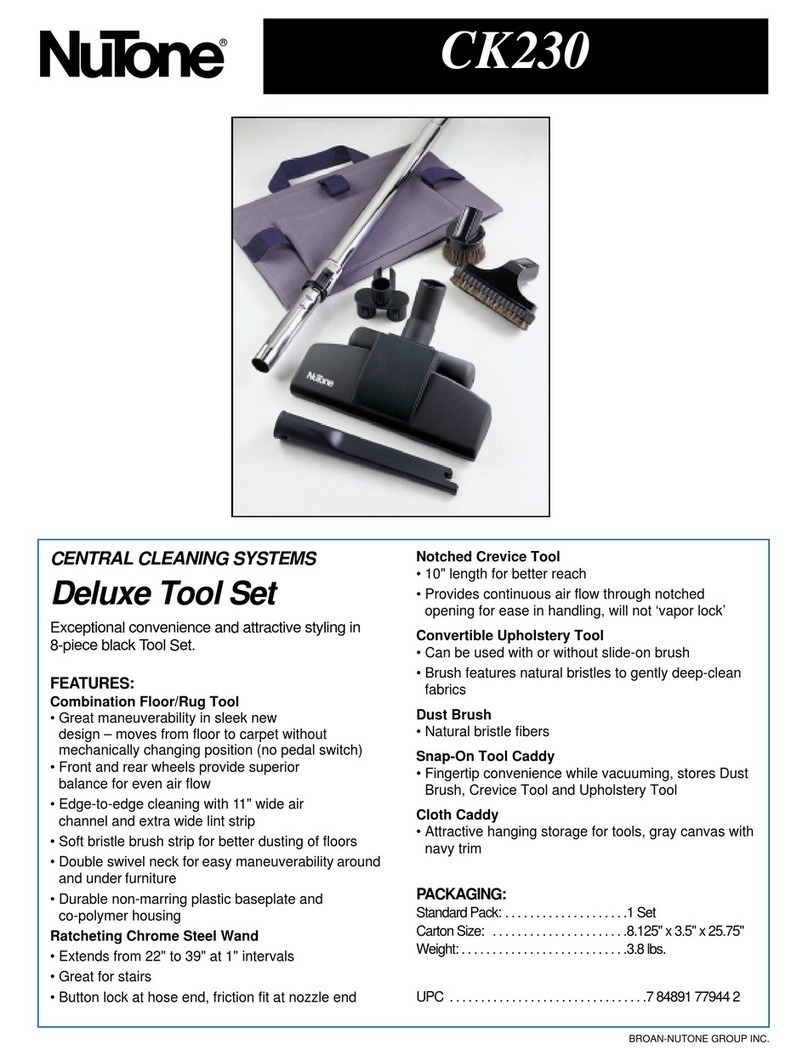
2
Sehr geehrte Kundin, sehr geehrter Kunde,
wir danken für Ihr Vertrauen. Sie haben eine gute Wahl getroffen, denn die THOMAS Zentralsauganlagen ermög-
lichen Ihnen eine neue Art des Staubsaugens:
– ohne Bewegen eines schweren Staubsaugers von Raum zu Raum,
– ohne dass die Abluft des Staubsaugers in den Raum gelangt – eine Wohltat nicht nur für Allergiker,
– ohne lautes Geräusch, trotzdem leistungsstark,
– ohne Probleme beim Reinigen von Treppen und über dem Kopf befindlichen Flächen.
Um die Anlage richtig zu betreiben und ihre Anwendungsmöglichkeiten voll auszuschöpfen, lesen Sie bitte sorgfältig
diese Anleitung und beachten Sie folgenden Hinweis:
ACHTUNG!
Zum bestimmungsgemäßen Betreiben der Zentralsauganlage müssen Sie die folgenden Anleitungen kennen und beachten:
• Planungshandbuch THOMAS Zentralsauganlage
• Installations- und Gebrauchsanleitung THOMAS Centra Clean 15-301 · 18-451 · 34-451.
Diese sind nur in Verbindung miteinander gültig! Sie gehören zur Anlage und müssen sorgfältig aufbewahrt wer-
den. Bei Besitzerwechsel müssen sie mit ausgehändigt werden!
Ihr THOMAS Team
1. SICHERHEITSVORSCHRIFTEN
Die Anlage darf nur wie in der Planungsbroschüre und in der
Installations- u. Gebrauchsanweisung beschrieben, installiert
und betrieben werden! Jeglicher anderer Gebrauch ist nicht
bestimmungsgemäß und deshalb unzulässig!
Bei Schäden durch fehlerhafte Installation, falsche Bedienung
und nicht bestimmungsgemäßen Gebrauch, sowie Nichtbe-
achten der Sicherheitsvorschriften erlischt jegliche Haftung.
• Der Handsender SKR4TRB2 ist nur zur Verwendung bei
den Zentralsauganlagen der Typen: 450 ZA; 451 ZA;
15-300 ZA;
18-450 ZA; 34-450 ZA; 15-301; 18-451;
34-451 und 15-301 PC; 18-451 PC
geeignet.
Die Inbetriebnahme des Handsenders ist nur in der gesam-
ten EU und in der Schweiz zulässig, da harmonisierte Fre-
quenzen verwendet werden (Class 1 Equipment).
ACHTUNG!
Beachten Sie sehr sorgfältig die zutreffenden Brandschutzvor-
schriften, besonders bei Durchdringen von Brandabschnitten
und Räumen, die der Versammlungsstättenrichtlinie unterlie-
gen, sowie die jeweils gültige Bauordnung.
Das Mitbenutzen der Hausentwässerung für die Abluftlei-
tungen ist nicht gestattet!
• THOMAS Zentralsauganlagen dienen ausschließlich der Nut-
zung im Haushalt.
• Das Gerät auf keinen Fall in Betrieb nehmen, wenn:
– die Netzanschlußleitung beschädigt ist,
– es sichtbare Schäden aufweist.
• Die Spannungsangabe auf dem Typenschild muss mit der
Versorgungsspannung übereinstimmen.
•Saugschlauch nicht knicken! Achten Sie besonders auf
Möbelkanten, Türen und Heizkörper.
•Keine langen oder sperrigen Gegenstände einsaugen. Ver-
stopfungsgefahr!
•Über die Zentralsauganlage darf keine Flüssigkeit und kein
Küchendunst angesaugt und befördert werden!
• Lassen Sie Kinder nicht ohne Aufsicht in der Nähe von Elek-
trogeräten und lassen Sie Kinder nicht an den Saug-dosen
spielen.
• Düsen und Rohre dürfen bei eingeschaltetem Gerät nicht in
Kopfnähe gelangen, da sonst Verletzungsgefahr insbeson-
dere für Augen und Ohren besteht.
• Das Gerät ist nicht zum Absaugen gesundheitsgefährdender,
ätzender und lösungsmittelhaltiger Stoffe geeignet.
• Das Gerät darf nicht in Räumen betrieben werden, in denen
feuergefährliche Stoffe lagern oder sich Gase gebildet
haben.
•
Dieses Gerät kann von Kindern ab 8 Jahren
und darüber und von Personen mit reduzierten
physischen, sensorischen oder mentalen Fähig-
keiten oder Mangel an Erfahrung und /oder Wis-
sen benutzt werden, wenn sie beaufsichtigt oder
bezüglich des sicheren Gebrauchs des Gerätes
unterwiesen wurden und die daraus resultieren-
den Gefahren verstanden haben. Kinder dürfen
nicht mit dem Gerät spielen. Reinigung und
Benutzer-Wartung dürfen nicht durch Kinder
ohne Beaufsichtigung durchgeführt werden.
• Stoffe wie Benzin, Farbverdünner und Heizöl können durch
Verwirbelung mit der Saugluft explosive Dämpfe oder Gemi-
sche bilden.
•
Niemals heiße Asche oder glühende Gegenstände aufsaugen.
• Überprüfen Sie vor Gebrauch, ob die Filterpatrone richtig
eingesetzt und unbeschädigt ist.
• Saugen Sie keinen Tonerstaub oder Ruß auf! Toner, der zum
Beispiel bei Druckern oder Kopiergeräten verwendet wird,
kann elektrisch leitfähig sein!
• Azeton, Säuren und Lösungsmittel können die am Gerät ver-
wendeten Materialien angreifen.
• Der Schlauch darf nicht über seine Ursprungslänge hinaus
gedehnt werden.
• Der Netzstecker ist zu ziehen:
➝bei Störungen während des Betriebes,
➝vor jeder Reinigung und Pflege,
➝bei jedem Filterwechsel.
• Niemals den Stecker am Kabel aus der Steckdose ziehen,
sondern ausschließlich am Stecker.
• Sorgen Sie dafür, daß die Anschlußleitung weder Hitze und
chemischen Flüssigkeiten ausgesetzt ist.
• Schäden am Gerät, am Zubehör, oder an der Netzanschluß-
leitung (Sonderleitung erforderlich) niemals selbst reparieren,
sondern nur durch eine autorisierte Kundendienststation
instand setzen lassen, denn Veränderungen am Gerät kön-
nen Ihre Gesundheit gefährden. Sorgen Sie dafür, daß nur
Original-Ersatzteile und Zubehör verwendet wird.
• Das Gerät keinen Witterungseinflüssen, keiner Feuchtigkeit
und keinen Hitzequellen aussetzen.
